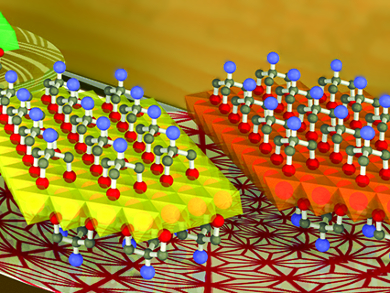Two-dimensional nanosheets have useful properties such as catalytic activity, conductivity, luminescence, and magnetism, and are often assembled as stacked layers. By incorporating flexible nanospace between the layers, the materials can be tuned for applications including sensing, ion exchange, drug delivery, and energy storage, among others.
One such layered material is brucite-type metal hydroxide. Generally composed of divalent metal cation centers (M), these materials have a high surface hydroxyl group content, making them ideal for functionalization. However, a general approach to their fabrication has yet to be developed because different functionalities give the materials different physicochemical properties.
Yoshiyuki Kuroda, Kazuyuki Kuroda, Waseda University, Tokyo, Japan, and colleagues have used tripodal ligands of the type Tris-R (RC(CH2OH)3, in which R could either be NH2, CH2OH, or NHC2H4SO3H, to introduce space between brucite-type layered metal hydroxides (called M-Tris-R). The team characterized the Mg-Tris-R layered materials using X-ray diffraction, showing that the space between the layers increased from 0.48 nm to around 1.06 nm.
The researchers showed that Mg-Tris-R can incorporate different alcohols (i.e., a series of n-alcohols from methanol to n-octanol). Finally, the team evaluated M-Tris-R materials with different metal cations (Mg, Mn, Fe, Co, Ni, or Cu) and showed that the Tris-R tripodal ligands could serve as “one size fits all” spacers for different brucite-type layered metal hydroxides.
- Direct Synthesis of Highly Designable Hybrid Metal Hydroxide Nanosheets by Using Tripodal Ligands as One-Size-Fits-All Modifiers,
Yoshiyuki Kuroda, Tatsuyuki Koichi, Keisuke Muramatsu, Kazuya Yamaguchi, Noritaka Mizuno, Atsushi Shimojima, Hiroaki Wada, Kazuyuki Kuroda,
Chem. Eur. J. 2017.
DOI: 10.1002/chem.201605698
